
City’s History in Brief in Cairo, Al Qāhirah, Egypt
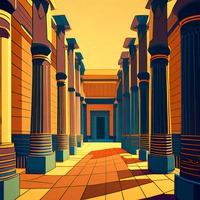
1. The Egyptian Museum
This museum houses an extensive collection of ancient Egyptian artifacts, providing a deep dive into Cairo's historical roots. It's a central spot for understanding Egypt's pharaohs and their treasures. The museum offers an educational experience about Egypt's ancient civilization.
- Location: Situated at Tahrir Square, making it easily accessible.
- Collections: Contains over 120,000 artifacts.
- Highlights: Home to the treasures of Tutankhamun.

2. The Cairo Citadel
A historic fortress that stands atop Mokattam Hill, offering panoramic views of Cairo. It was once a symbol of Salah El-Din’s power and remains a site full of medieval Islamic architecture. Visiting here provides insights into Cairo's strategic military history.
- Architecture: Exhibits fine examples of Islamic design.
- Viewpoint: Offers a commanding view of Cairo's skyline.
- Historical Significance: Built to protect the city from Crusaders.
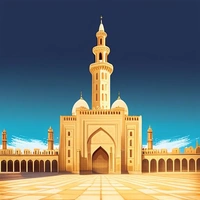
3. Al-Azhar Mosque
Established in 970 AD, it's one of the oldest functioning universities in the world. It is not only a place of worship but also a center of Islamic learning. The mosque reflects Cairo's role in Islamic education over centuries.
- Educational Influence: Central to Sunni Islamic scholarship.
- Architectural Style: Features Fatimid design elements.
- Cultural Impact: A hub for religious scholars.
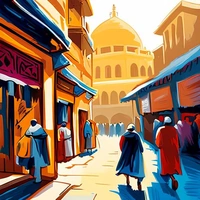
4. Khan El Khalili Bazaar
This bustling souk dates back to 1382, providing an authentic market experience in the heart of Islamic Cairo. It reveals insights into Cairo's medieval commercial life. The bazaar is a place where history and commerce intertwine.
- Atmosphere: Vibrant and full of traditional Egyptian goods.
- History: Originated as a major trade hub.
- Diversity: Offers a range of items from spices to jewelry.

5. Old Cairo (Coptic Cairo)
A part of the city that shows Cairo’s Christian past, with landmarks like the Hanging Church and Ben Ezra Synagogue. It's a glimpse into the city’s diverse religious history. Visitors learn about the Christian community's influence in Cairo.
- Spiritual Significance: Home to several ancient churches.
- Multicultural Aspect: Reflects coexistence of religions.
- Architectural Interest: Unique blend of Coptic architecture.

6. The Hanging Church
Located in Old Cairo, this church is renowned for its position above a gatehouse of the Babylon Fortress. It is a pivotal site for Egypt's Christians and showcases exquisite Coptic art. The church is symbolic of Cairo's Christian architectural legacy.
- Elevation: Built on the southern gate of the fortress.
- Art: Notable for its wooden ceiling and icons.
- Religious Importance: Central to the Coptic community.
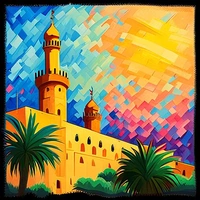
7. Saladin’s Citadel and Muhammad Ali Mosque
These grand structures represent a critical era in Cairo's history during the Ottoman period. The mosque is especially known for its Turkish style and ornate design. It's a testament to Cairo's historical layers and architectural evolution.
- Dominant Feature: The mosque's striking domes.
- Ottoman Influence: Displays Turkish architectural aesthetics.
- Historical Layering: Highlights the Ottoman era in Cairo.
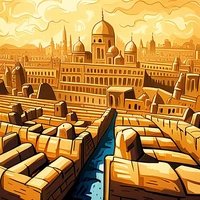
8. The City of the Dead
A vast Islamic necropolis that blends Cairo's living and deceased with people residing in tomb structures. It tells stories of Cairo’s past through its historical graves and tombs. The area adds a unique angle to Cairo's residential history.
- Unusual Living Arrangements: Tombs are used as homes.
- Historical Graves: Contains many ancient tombs.
- Community: Offers insight into a unique urban lifestyle.
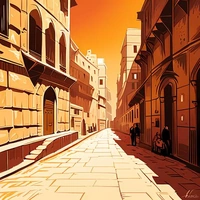
9. Al-Muizz Street
This street is a major cultural vein with a rich collection of Islamic architecture. Al-Muizz Street serves as a timeline of Cairo's evolving Islamic history through its monuments. It's a showcase of Cairo's Islamic contributions throughout history.
- Architectural Array: Houses many beautiful Islamic monuments.
- Preservation: Fully restored to reflect its historical glory.
- Cultural Stroll: Great for walking tours through history.

10. Bab Zuweila
One of the three remaining gates of the old city wall, built in the 11th century. It offers a chance to understand Cairo's medieval fortifications and trade routes. The structure lets visitors feel the defensive architecture of old Cairo.
- Original Structure: Last of the southern gates standing.
- Commerce: Was once an entry point for traders.
- View from Above: Provides excellent city views if climbed.
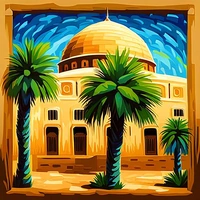
11. The Gayer-Anderson Museum
Named after the British Major who collected beautiful Islamic and European art. The museum offers a glimpse into 17th-century Cairo through its architecture and furnishings. The house itself is an artifact of Cairo's residential past.
- Artistic Collections: Combines Islamic and European art.
- Architecture: Features a traditional Cairo house design.
- Unique Contribution: Offers a home-like museum experience.
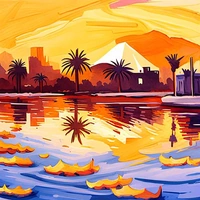
12. Gezira Island
Historically, this island in the Nile played a key role during Cairo's colonial era. Now it's home to Zamalek district, featuring a mix of colonial and modern architecture. The island provides a backdrop to Cairo's transition over time.
- Dual Architectural Style: Colonial remnants and modernity co-exist.
- Location: Central position on the Nile River.
- Recreational Spaces: Known for its lush greenery and clubs.
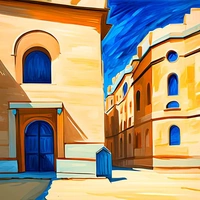
13. Abdeen Palace and Museum
Once the official residence of Egypt's monarchy, it is an opulent reminder of Egypt's royal past. Its galleries display gifts presented to the royal family and other artifacts. The palace lets visitors explore the lifestyle of Egypt's last kings.
- Royal Residence: Served as the principal palace for the monarchy.
- Artifacts: Houses royal gifts and historical documents.
- Architectural Design: An example of royal opulence.
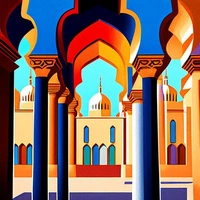
14. The Islamic Art Museum
This museum showcases the extensive range of Islamic artifacts from across the globe. It highlights the historical significance of Islamic influence in Cairo through art and functional objects. With diverse exhibits, it covers a millennium of art history.
- Diversity: Contains pieces from various Islamic periods.
- Preservation: Focuses on cultural heritage conservation.
- Educational Component: Contextualizes Islamic influence on art.
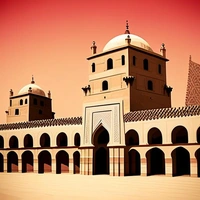
15. Ibn Tulun Mosque
One of the oldest mosques in Cairo, built in the 9th century by the Abbasid governor of Egypt. Its vast courtyard and distinct architecture make it a monumental example of Islamic design. It's an essential stop for understanding early Islamic Cairo.
- Architectural Standout: Uniquely styled with its spiral minaret.
- Size: Known for its large open courtyard.
- Age: One of Cairo's oldest intact mosques.
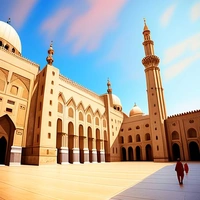
16. Sultan Hassan Mosque
Recognized for its massive scale and grandeur, it was built in the 14th century. It’s a masterpiece of Islamic architecture and features intricate decorations inside. This mosque reflects the Mamluk Sultanate’s influence on Cairo's landscape.
- Grandeur: Imposing walls and high ceilings.
- Decoration: Features complex geometric ornamentation.
- Historical Backdrop: Built during the powerful Mamluk period.
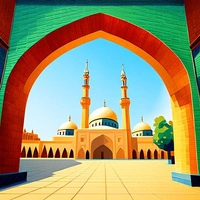
17. Al-Rifa'i Mosque
Positioned opposite the Sultan Hassan Mosque, it complements its neighbor with its grand architecture. Built to host royal ceremonies, it now houses tombs of Egypt's last royal rulers. This mosque draws connections between religious and royal histories.
- Tombs: Burial site for Egypt's last kings and queens.
- Location: Adjacent to another historical mosque.
- Use: Initially intended for significant events and processions.

18. Cairo Tower
Once the tallest structure in North Africa, this tower offers a different perspective on Cairo’s modern history. It symbolizes post-revolutionary Egypt striving to display its national pride. A unique contrast to historical settings, it highlights Cairo's modernization.
- Distinctive Design: Lotus flower-inspired structure.
- Viewing Platform: Offers a 360-degree view of the city.
- Era: Reflects the mid-20th-century architecture.
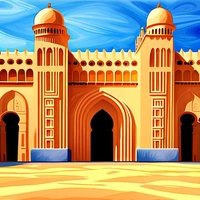
19. Manial Palace
Built by Prince Mohammed Ali Tewfik in the early 20th century, this palace combines European and Islamic styles. The palace's multiple buildings and gardens tell stories of Egypt's royal past and artistic ambitions. It’s an insight into Egypt's aristocratic lifestyle.
- Style Fusion: Blends Ottoman, Moorish, and Persian styles.
- Gardens: Extensive and beautifully landscaped.
- Historical Residence: Was a royal setting for Mohammed Ali’s dynasty.

20. Saqqara Step Pyramid
Though not directly in Cairo, it's the precursor to the iconic pyramids of Giza. Built for Pharaoh Djoser, it marks the beginning of pyramid construction styles. A visit here adds depth to understanding Cairo's role as the heart of ancient Egypt's innovation.
- Pyramid Evolution: Oldest complete stone structure.
- Archaeological Importance: Pivotal in pyramid development.
- Unique Site: Offers insight into early dynastic engineering.
